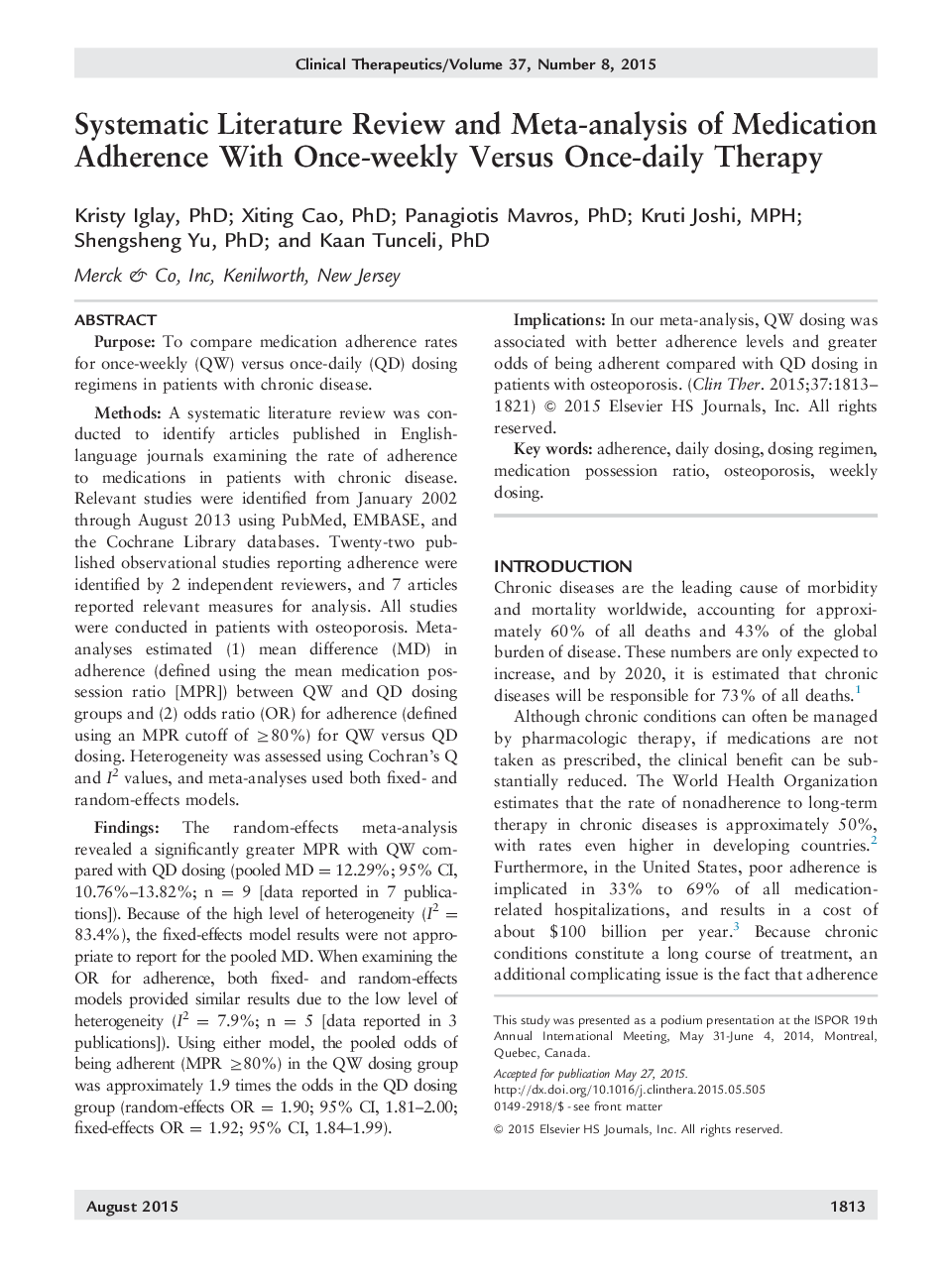| Article ID | Journal | Published Year | Pages | File Type |
|---|---|---|---|---|
| 5824926 | Clinical Therapeutics | 2015 | 10 Pages |
PurposeTo compare medication adherence rates for once-weekly (QW) versus once-daily (QD) dosing regimens in patients with chronic disease.MethodsA systematic literature review was conducted to identify articles published in English-language journals examining the rate of adherence to medications in patients with chronic disease. Relevant studies were identified from January 2002 through August 2013 using PubMed, EMBASE, and the Cochrane Library databases. Twenty-two published observational studies reporting adherence were identified by 2 independent reviewers, and 7 articles reported relevant measures for analysis. All studies were conducted in patients with osteoporosis. Meta-analyses estimated (1) mean difference (MD) in adherence (defined using the mean medication possession ratio [MPR]) between QW and QD dosing groups and (2) odds ratio (OR) for adherence (defined using an MPR cutoff of â¥80%) for QW versus QD dosing. Heterogeneity was assessed using Cochran's Q and I2 values, and meta-analyses used both fixed- and random-effects models.FindingsThe random-effects meta-analysis revealed a significantly greater MPR with QW compared with QD dosing (pooled MD = 12.29%; 95% CI, 10.76%-13.82%; n = 9 [data reported in 7 publications]). Because of the high level of heterogeneity (I2 = 83.4%), the fixed-effects model results were not appropriate to report for the pooled MD. When examining the OR for adherence, both fixed- and random-effects models provided similar results due to the low level of heterogeneity (I2 = 7.9%; n = 5 [data reported in 3 publications]). Using either model, the pooled odds of being adherent (MPR â¥80%) in the QW dosing group was approximately 1.9 times the odds in the QD dosing group (random-effects OR = 1.90; 95% CI, 1.81-2.00; fixed-effects OR = 1.92; 95% CI, 1.84-1.99).ImplicationsIn our meta-analysis, QW dosing was associated with better adherence levels and greater odds of being adherent compared with QD dosing in patients with osteoporosis.
